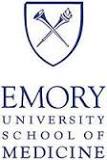Inorganic Nitrite Delivery to Improve Exercise Capacity in HFpEF
| Status: | Completed |
|---|---|
| Conditions: | Cardiology |
| Therapuetic Areas: | Cardiology / Vascular Diseases |
| Healthy: | No |
| Age Range: | 40 - Any |
| Updated: | 3/15/2019 |
| Start Date: | August 10, 2016 |
| End Date: | December 27, 2017 |
A randomized, double-blind, placebo-controlled crossover study to assess the effect of
inorganic nitrite (NO2) on aerobic capacity (peak VO2) after four weeks of dosing.
Approximately 100 participants will be enrolled in this 2*2 crossover study.
inorganic nitrite (NO2) on aerobic capacity (peak VO2) after four weeks of dosing.
Approximately 100 participants will be enrolled in this 2*2 crossover study.
Screen potential HFpEF patients for eligibility criteria and interest
Study Visit 1 • Initiate consent process and obtain written informed consent.
- Confirm with the participant that HF symptoms are the primary limitation to activity. If
so, they proceed to CPET screening. If not, they are considered a screen fail.
- Obtain baseline bloods *- CBC, complete chemistry panel, biomarkers, biorepository and
genetics (if agreed to participate) .
- Obtain CPET to verify patient eligibility peak VO2 ≤ 75% predicted and RER ≥ 1.0 (within
3 days prior to randomization) and establish baseline value.
- Qualifying patients perform additional baseline studies: history, assess NYHA class,
physical exam, ECG, and KCCQ.
- Open label, single-dose run-in where patient receives maximal dose (80 mg) inhaled
inorganic nitrite. Patients who do not tolerate the run-in are considered screen
failures.
- Randomize qualifying patients.
- Dispense phase-1 study drug, nebulizers and accelerometers
- Participants take no study drug for two weeks (baseline).
- Participants take 46 mg study drug at a minimum of 4 hours apart, 3 times a day, during
active part of the day for 7 days.
- Participants take 80 mg study drug at a minimum of 4 hours apart, 3 times a day, during
active part of the day until returning for study visit 2 (at least 42 days but up to 49
days post-baseline visit).
- If side effects develop, participants can down-titrate to the previous dose.
- Participants are called frequently to reinforce study procedures and assess compliance.
Study Visit 2 (42-49 Days Post Study Visit 1)
- Participant holds study drug on day of visit.
- Review history, assess NYHA class, perform physical exam and KCCQ.
- Obtain blood draws ** - CBC, complete chemistry panel, biomarkers, biorepository (if
agreed to participate).
- Obtain limited echocardiogram **.
- Perform CPET with Study Drug administered immediately before starting the CPET (primary
endpoint).
- Change out accelerometer and dispense phase-2 study drug.
- Participants take no study drug for two weeks (washout).
- Participants take 46 mg study drug at a minimum of 4 hours apart, 3 times a day, during
active part of the day for 7 days.
- Participants take 80 mg study drug at a minimum of 4 hours apart, 3 times a day, during
active part of the day until returning for study visit 3 (at least 42 but up to 49 days
after study visit 2).
- If side effects develop Participants can down-titrate to the previously tolerated dose.
- Participants are called frequently to reinforce study procedures and assess compliance.
Study Visit 3 (42-49 Days Post Study Visit 2)
• Participant holds study drug on day of visit.
- Review history, assess NYHA class, perform physical exam and KCCQ
- Obtain blood draws** - CBC, complete chemistry panel, biomarkers, biorepository (if
agreed to participate).
- Obtain limited echocardiogram**.
- Perform CPET with Study Drug administered immediately before starting the CPET (primary
endpoint).
- Return accelerometer and phase-2 study drug.
- End of study drug (phase out).
Phone Visit and End of Study (14 Days Post Study Visit 3)
- A final phone visit is conducted to assess for adverse events.
- Visit 1: baseline blood draw needs to be completed prior to the CPET (if this is
not feasible, then they cannot be obtained for at least 3 hours post the CPET and
prior to the run-in test dose).
- Visit 2 and Visit 3: blood draws and limited echo need to be obtained prior to
study drug administration (if this is not feasible, then it cannot be obtained
for at least 3 hours post study drug administration)
Study Visit 1 • Initiate consent process and obtain written informed consent.
- Confirm with the participant that HF symptoms are the primary limitation to activity. If
so, they proceed to CPET screening. If not, they are considered a screen fail.
- Obtain baseline bloods *- CBC, complete chemistry panel, biomarkers, biorepository and
genetics (if agreed to participate) .
- Obtain CPET to verify patient eligibility peak VO2 ≤ 75% predicted and RER ≥ 1.0 (within
3 days prior to randomization) and establish baseline value.
- Qualifying patients perform additional baseline studies: history, assess NYHA class,
physical exam, ECG, and KCCQ.
- Open label, single-dose run-in where patient receives maximal dose (80 mg) inhaled
inorganic nitrite. Patients who do not tolerate the run-in are considered screen
failures.
- Randomize qualifying patients.
- Dispense phase-1 study drug, nebulizers and accelerometers
- Participants take no study drug for two weeks (baseline).
- Participants take 46 mg study drug at a minimum of 4 hours apart, 3 times a day, during
active part of the day for 7 days.
- Participants take 80 mg study drug at a minimum of 4 hours apart, 3 times a day, during
active part of the day until returning for study visit 2 (at least 42 days but up to 49
days post-baseline visit).
- If side effects develop, participants can down-titrate to the previous dose.
- Participants are called frequently to reinforce study procedures and assess compliance.
Study Visit 2 (42-49 Days Post Study Visit 1)
- Participant holds study drug on day of visit.
- Review history, assess NYHA class, perform physical exam and KCCQ.
- Obtain blood draws ** - CBC, complete chemistry panel, biomarkers, biorepository (if
agreed to participate).
- Obtain limited echocardiogram **.
- Perform CPET with Study Drug administered immediately before starting the CPET (primary
endpoint).
- Change out accelerometer and dispense phase-2 study drug.
- Participants take no study drug for two weeks (washout).
- Participants take 46 mg study drug at a minimum of 4 hours apart, 3 times a day, during
active part of the day for 7 days.
- Participants take 80 mg study drug at a minimum of 4 hours apart, 3 times a day, during
active part of the day until returning for study visit 3 (at least 42 but up to 49 days
after study visit 2).
- If side effects develop Participants can down-titrate to the previously tolerated dose.
- Participants are called frequently to reinforce study procedures and assess compliance.
Study Visit 3 (42-49 Days Post Study Visit 2)
• Participant holds study drug on day of visit.
- Review history, assess NYHA class, perform physical exam and KCCQ
- Obtain blood draws** - CBC, complete chemistry panel, biomarkers, biorepository (if
agreed to participate).
- Obtain limited echocardiogram**.
- Perform CPET with Study Drug administered immediately before starting the CPET (primary
endpoint).
- Return accelerometer and phase-2 study drug.
- End of study drug (phase out).
Phone Visit and End of Study (14 Days Post Study Visit 3)
- A final phone visit is conducted to assess for adverse events.
- Visit 1: baseline blood draw needs to be completed prior to the CPET (if this is
not feasible, then they cannot be obtained for at least 3 hours post the CPET and
prior to the run-in test dose).
- Visit 2 and Visit 3: blood draws and limited echo need to be obtained prior to
study drug administration (if this is not feasible, then it cannot be obtained
for at least 3 hours post study drug administration)
Inclusion Criteria:
1. Age ≥ 40 years
2. Symptoms of dyspnea (NYHA class II-IV) without evidence of a non-cardiac or ischemic
explanation for dyspnea
3. EF ≥ 50% as determined on imaging study within 12 months of enrollment with no change
in clinical status suggesting potential for deterioration in systolic function
4. One of the following :
- Previous hospitalization for HF with radiographic evidence (pulmonary venous
hypertension, vascular congestion, interstitial edema, pleural effusion) of
pulmonary congestion or
- Catheterization documented elevated filling pressures at rest (PCWP ≥15 or LVEDP
≥18) or with exercise (PCWP ≥25) or
- Elevated NT-proBNP (>400 pg/ml) or BNP(>200 pg/ml) or
- Echo evidence of diastolic dysfunction/elevated filling pressures manifest by
medial E/e' ratio≥15 and/or left atrial enlargement and chronic treatment with a
loop diuretic for signs or symptoms of heart failure
5. Heart failure is primary factor limiting activity as indicated by answering # 2 to the
following question:
My ability to be active is most limited by:
1. Joint, foot, leg, hip or back pain
2. Shortness of breath and/or fatigue and/or chest pain
3. Unsteadiness or dizziness
4. Lifestyle, weather, or I just don't like to be active
6. Peak VO2 ≤75% predicted with peak respiratory exchange ratio≥1.0 CPET Normal Values for
Peak VO2* Criteria (ml/kg/min) 7. No chronic nitrate therapy or not using intermittent
sublingual nitroglycerin (requirement for >1 SL nitroglycerin per week) within last 7 days
8. No daily use of phosphodiesterase 5 inhibitors or soluble guanylyl cyclase activators
and willing to withhold prn use of phosphodiesterase 5 inhibitors for duration of study 9.
Ambulatory (not wheelchair / scooter dependent) 10. Body size allows wearing of the
accelerometer belt as confirmed by ability to comfortably fasten the test belt provided for
the screening process (belt designed to fit persons with BMI 20-40 kg/m2 but belt may fit
some persons outside this range) 11. Willingness to wear the accelerometer belt for the
duration of the trial 12. Willingness to provide informed consent
Exclusion Criteria:
1. Recent (< 1 month) hospitalization for heart failure
2. Ongoing requirement for PDE5 inhibitor, organic nitrate or soluble guanylyl cyclase
activators
3. Hemoglobin (Hgb) < 8.0 g/dl within 90 days prior to randomization
4. GFR < 20 ml/min/1.73 m2 within 90 days prior to randomization
5. Systolic blood pressure < 115 mmHg seated or < 90 mmHg standing just prior to test
dose
6. Resting HR > 110 just prior to test dose
7. Previous adverse reaction to the study drug which necessitated withdrawal of therapy
8. Significant chronic obstructive pulmonary disease thought to contribute to dyspnea
9. Ischemia thought to contribute to dyspnea
10. Documentation of previous EF < 45%
11. Acute coronary syndrome within 3 months defined by electrocardiographic (ECG) changes
and biomarkers of myocardial necrosis (e.g., troponin) in an appropriate clinical
setting (chest discomfort or anginal equivalent)
12. PCI, coronary artery bypass grafting, or new biventricular pacing within past 3 months
13. Primary hypertrophic cardiomyopathy
14. Infiltrative cardiomyopathy (amyloid)
15. Constrictive pericarditis or tamponade
16. Active myocarditis
17. Complex congenital heart disease
18. Active collagen vascular disease
19. More than mild aortic or mitral stenosis
20. Intrinsic (prolapse, rheumatic) valve disease with moderate to severe or severe
mitral, tricuspid or aortic regurgitation
21. Acute or chronic severe liver disease as evidenced by any of the following:
encephalopathy, variceal bleeding, INR > 1.7 in the absence of anticoagulation
treatment
22. Terminal illness (other than HF) with expected survival of less than 1 year
23. Regularly (> 1x per week) swims or does water aerobics
24. Enrollment or planned enrollment in another therapeutic clinical trial in next 3
months.
25. Inability to comply with planned study procedures
26. Pregnancy or breastfeeding mothers
We found this trial at
20
sites
Duke Univ Med Ctr As a world-class academic and health care system, Duke Medicine strives...
Click here to add this to my saved trials
Emory University School of Medicine Emory University School of Medicine has 2,359 full- and part-time...
Click here to add this to my saved trials
Tufts Medical Center Tufts Medical Center is an internationally-respected academic medical center – a teaching...
Click here to add this to my saved trials
Click here to add this to my saved trials
Brigham and Women's Hosp Boston’s Brigham and Women’s Hospital (BWH) is an international leader in...
Click here to add this to my saved trials
Abington Memorial Hospital Abington Memorial Hospital (AMH) is a 665-bed, regional referral center and teaching...
Click here to add this to my saved trials
Johns Hopkins Hospital Patients are the focus of everything we do at The Johns Hopkins...
Click here to add this to my saved trials
Click here to add this to my saved trials
Click here to add this to my saved trials
Click here to add this to my saved trials
Click here to add this to my saved trials
Cleveland Clinic Foundation The Cleveland Clinic (formally known as The Cleveland Clinic Foundation) is a...
Click here to add this to my saved trials
Click here to add this to my saved trials
Click here to add this to my saved trials
Click here to add this to my saved trials
Click here to add this to my saved trials
Click here to add this to my saved trials
660 S Euclid Ave
Saint Louis, Missouri 63110
Saint Louis, Missouri 63110
(314) 362-5000

Washington University School of Medicine Washington University Physicians is the clinical practice of the School...
Click here to add this to my saved trials
Stony Brook University Medical Center Stony Brook Medicine expresses our shared mission of research, clinical...
Click here to add this to my saved trials
Click here to add this to my saved trials








